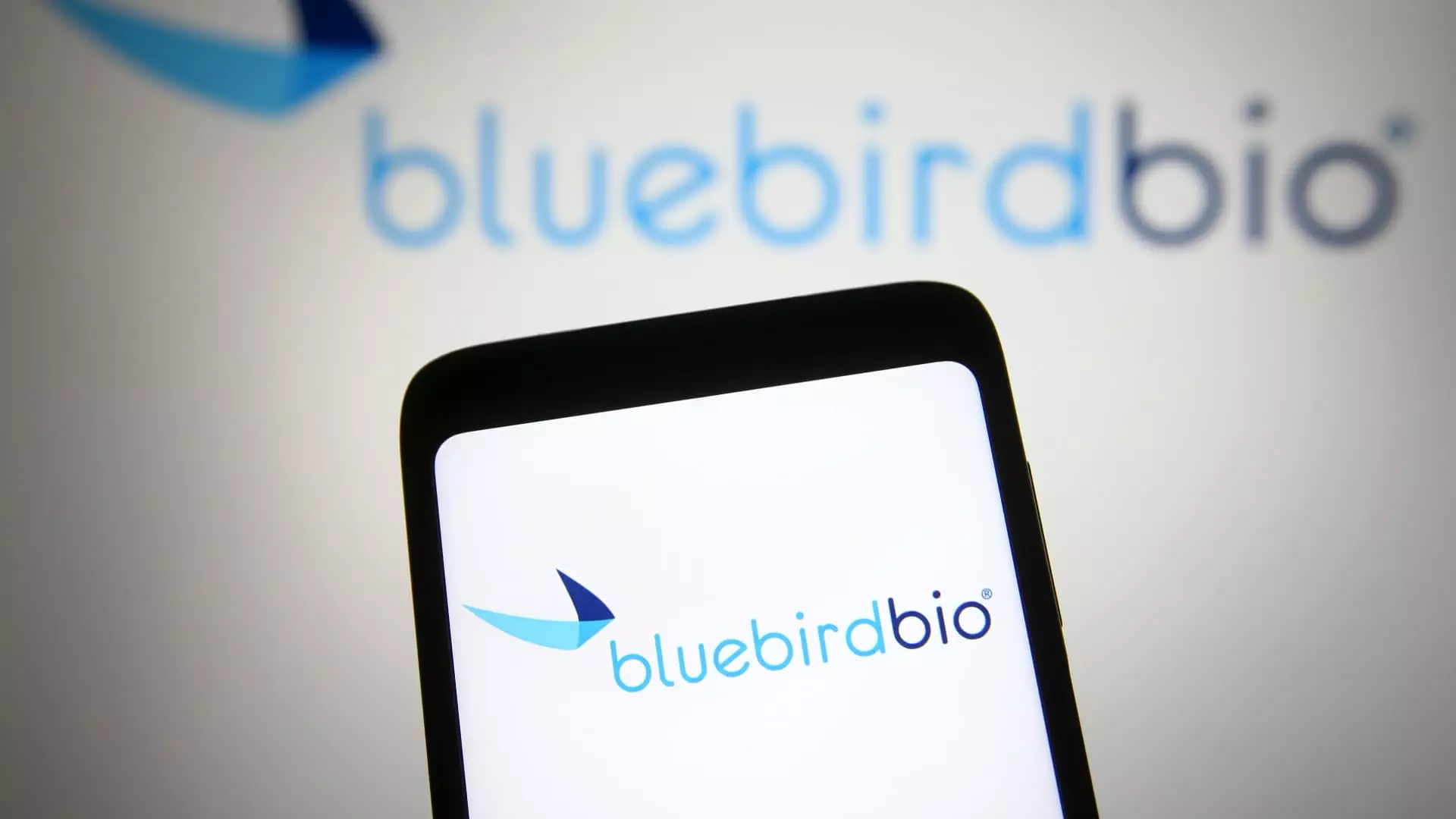Bluebird Bio’s transition from a leading biotech innovator to a mere footnote in the industry illustrates the unpredictable nature of biotechnology investments and the challenges that surround gene therapies. Once heralded for their ambitious gene-modifying treatments, the company has undergone a rapid decline, culminating in a recent sale to private equity firms Carlyle and SK Capital for a mere $30 million. This staggering drop reflects not only financial hardship but also raises existential questions about the sustainability of pioneering biotechnology.
On the surface, the $30 million sale price translates to a paltry $3 per share for shareholders, significantly lower than Bluebird’s previous closing price of $7.04. While there remains the potential for an additional $6.84 per share contingent on future sales of its gene therapies reaching $600 million annually by 2027, this upside appears unlikely given the company’s tumultuous history and current trajectory. Investors once believed in Bluebird’s transformative capabilities, leading to a market capitalization that swelled to nearly $9 billion at its peak. Unfortunately, an alarming market cap decline to under $41 million underscores the company’s inability to capitalize on its earlier promise.
For over three decades, Bluebird Bio positioned itself at the forefront of genetic treatment innovations. At its height, the company made waves with its groundbreaking treatments, designed to cure severe genetic disorders, such as sickle cell disease and beta thalassemia. However, the optimism surrounding its products was severely tested after the 2018 incident, where a patient diagnosed with cancer raised alarm bells about the safety of their gene-altering therapies. Despite concluding that their treatment was not a direct cause of the illness, this controversy catalyzed a string of regulatory scrutiny and public skepticism around their methodologies.
Compounded by punishing pricing strategies, such as the $1.8 million tag on its beta thalassemia therapy, Zynteglo, Bluebird’s strategies failed to align with market realities. The subsequent withdrawal from the European market only two years post-approval illustrates a classic case of innovation outpacing market acceptance and financial prudence. The focus then shifted to the U.S. market, where the company struggled to recover from its financial setbacks, further diminishing its appeal.
Bluebird’s strategic decisions have also played a pivotal role in its downfall. The split of its cancer-related therapies into a separate entity, 2Seventy Bio, eliminated a critical revenue source at a time when the company could least afford to shed assets. In financial climates rife with challenges, this arithmetic did not add up favorably for Bluebird.
The massive operational costs, regularly documented as reaching hundreds of millions yearly, exacerbated the cash flow crisis. As reported in November, Bluebird acknowledged that its existing cash reserves were only sufficient to support its operations into the first quarter of this year, highlighting an impending financial crisis that culminated in the decision to sell.
The challenges faced by Bluebird Bio resonate widely with the entire biotech sector, as companies grapple with turning groundbreaking yet expensive therapies into profitable business models. Competitors like Vertex with their sickle cell gene therapy, Casgevy, have experienced lukewarm market responses, while Pfizer has recently abandoned a gene therapy for hemophilia due to lackluster demand. Such instances signal a pressing need for the biotech industry to reevaluate operational frameworks and pricing strategies in line with market expectations and health economics.
Ultimately, while Bluebird’s gene therapies can yield life-altering results, they have proven insufficient to save the company from its financial misadventures. The case of Bluebird Bio serves as an important reminder about the volatility of biotech ventures and the critical balance that must be struck between innovation and commercial viability. As the company’s legacy enters its twilight with this sale, the industry will undoubtedly be watching closely to discern what lessons can be drawn from the rise and fall of one of biotech’s once-ambitious frontrunners.

